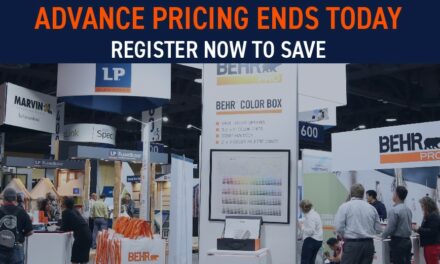A representative from the Texas Department of Insurance (TDI) spoke to those at the American Architectural Manufacturers Association (AAMA) Fall Conference about the state’s voluntary windstorm program and what manufacturers need to know when operating in 14 Texas counties in a designated catastrophe area along the Gulf Coast. Dr. Paul Bove’s presentation was sponsored by AAMA’s Southeast Region, and a webinar version of his presentation will be given Nov. 12.
Bove provided an overview of the program as well as relevant building code requirements; requirements for fenestration products; those products’ submittal requirements; the product evaluation process; and common issues associated with submittals and evaluation.

Dr. Paul Bove
“The windstorm program here is unique,” Bove said. “It’s voluntary, but it exists because there was a necessity to have insurance coverage for those who wanted to buy a home or operate a commercial space here in Texas.”
The Texas Windstorm Insurance Association (TWIA) was set up to act as a last resort, said Bove, meaning if one is unable to obtain insurance coverage through a voluntary carrier, one can go to TWIA.
“It provides windstorm and hail insurance for structures in the 14 counties that border the Texas Gulf Coast, which are considered that designated catastrophe area,” said Bove.
The TDI adopts building specifications; certifies to TWIA that structures are insurable against windstorm and hail losses; provides inspection services; and processes windstorm forms, said Bove. It also evaluates building products for compliance with those adopted specifications.
The windstorm program is required for those wishing to be eligible for windstorm insurance through TWIA, and also for those who seek to maintain windstorm insurance through TWIA. This might be in the case of new construction, repairs, additions or alterations, Bove said.
The TDI employs field inspectors (cladding inspections only) or TDI appointed qualified inspectors (AQI) to perform inspections. These AQI’s are Texas licensed professional engineers. The TWIA currently refers to the 2006 International Residential Code (IRC) and the 2006 International Building Code (IBC). Adoptions the 2018 IRC and IBC has been proposed. If adopted, the designated catastrophe areas will remain the same and wind speeds will be determined per ASCE 7-16. Windborne debris protection will be required for all three zones in the catastrophe area, which are defined as Inland II, Inland I and Seward. The TDI defines wind speeds for each zone, based on the wind speed map.
“When it comes to requirements for fenestration products, the most important thing for the inspector is to be able to identify the product,” said Bove.
Making a submittal includes many steps. A separate submittal is needed for each product line to be tested. While information must be mailed to TDI, no forms or fees are required.
Submittals require a hard copy of a cover letter on company letterhead with a state intention of submittal. This can be for a new submittal or a revision to an existing approval. Along with this, a CD or flash drive must include PDFs of test reports, product certifications, labels, design drawings and engineering analysis.
“If everything is included properly, a submittal is then logged into the database and is assigned an ID number. Submittals are always reviewed by an engineer on our staff in the order they are received,” said Bove.
If a draft is accepted, a final print is made. A report number is assigned, and a re-evaluation date is keyed to certification expiration with a maximum of four years. The report, including its drawings, are then posted to the TDI site.
From a field inspector standpoint, a common issue is the certification label applied to a product does not match the one listed in the TDI evaluation report. Bove recommended being especially vigilant of labels when submitting information to the TDI.
A webinar version of Bove’s presentation will be held at 11:30 a.m. on Tues., Nov. 12. This session is open to all in the industry. More information about AAMA and its activities can be found on the AAMA website at https://aamanet.org.
AAMA is the source of performance standards, product certification,
and educational programs for the fenestration industry.sm




